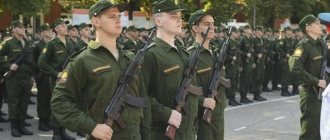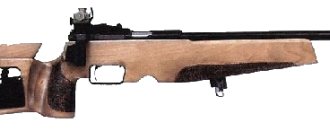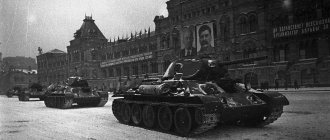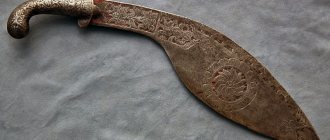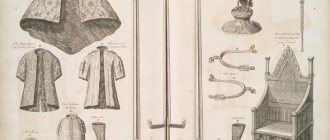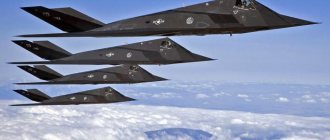On the way to fighter aircraft
At birth, Mikoyan had the name Anushavan Ovanesovich. Born on August 5, 1905 in the village of Sanahin, Borchali district, Tiflis province (now the city of Alaverdi, Armenia). His father worked at a copper smelter, his mother was a housewife. The elder brother, Anastas Mikoyan, was a famous Soviet statesman and politician, “Stalin’s favorite people’s commissar.”
Artem received his primary two-year education at a rural school. After the death of his father, he continued his studies at an Armenian school in Tiflis (now Tbilisi, Georgia). In 1923, in Rostov-on-Don, he entered the factory apprenticeship school at , and was an apprentice turner. In 1925 he moved to Moscow, where he worked as a turner.
In December 1928, he was drafted into the ranks of the Workers 'and Peasants' Red Army (RKKA). In 1931 he was sent to the Air Force Academy named after Professor N.E. Zhukovsky (now the Air Force Academy named after Professor N.E. Zhukovsky and Yu.A. Gagarin). In 1935, he underwent practical training in Kharkov. Together with other academy students, in 1937 he built his first light aircraft, the Oktyabrenok aircraft, which was highly praised by the Central Aero Club.
Artem Mikoyan © Press service of RSK MiG
In the same year, he defended his graduation project and received the title of military mechanical engineer of the Red Army Air Force and was appointed a military representative at the aircraft plant No. 1 named after. Aviakhim, where the Nikolai Polikarpov Design Bureau was transferred at the beginning of 1939. In March 1939, Artem Ivanovich was transferred from military acceptance to the NKAP - to the Polikarpov Design Bureau, where he was appointed head of KB-1 for maneuverable fighters.
On December 8, 1939, Mikoyan was appointed head of the new Special Design Department (OKO), organized at the same plant. This day became the birthday of the new design bureau. There he will rise to chief designer, and aircraft designer Mikhail Gurevich will become his deputy.
Mikhail Gurevich and Artem Mikoyan © Press service of RSK MiG
Soon after the start of the Great Patriotic War, in October 1941, plant No. 1 was evacuated to Kuibyshev (now Samara). After the return of the OKO team and the experimental workshop to Moscow in March 1942, Mikoyan became the director and chief designer of the pilot plant No. 155 (OKB-155, since 1966 - Moscow Machine-Building Plant). Subsequently, in 1971, the plant was named after A.I. Mikoyan (now the A.I. Mikoyan Design Bureau as part of RSK MiG). In December 1956, Artem Ivanovich was appointed to the position of general designer.
Under the leadership of Mikoyan and Gurevich, 15 aircraft with high performance characteristics were developed in 1940–1945, including the MiG-1 and MiG-3 (1940), which took part in the Great Patriotic War.
Mig-3 aircraft, created by the design bureau of A.I. Mikoyan and M.I. Gurevich / TASS Photo Chronicle
The highest results during the tests were shown by the high-altitude fighter-interceptor I-224 (1944), which rose to a height of 14,100 m, the I-225 (1944), which showed a maximum speed of 726 km/h, as well as the I-250 (1945) with a combined power plant, reaching a speed of 820 km/h using a jet accelerator.
MiG-1 aircraft
In December 1939, at the Moscow aircraft plant No. 1 named after. Aviakhim by order of director P.A. Voronin organized an independent special design department (OKO) for the design and construction of the I-200 high-speed fighter ("X", ed. 61). This aircraft was supposed to surpass in speed other domestic and foreign combat aircraft of those years. Artem Ivanovich Mikoyan was appointed head of OKO, and Mikhail Iosifovich Gurevich was appointed his deputy.
The Soviet Air Force needed to quickly update its aircraft fleet, and the I-200 was created in record time. By the day of the organization of OKO - December 8, 1939, the development of the preliminary design was completed. On December 25, the aircraft mock-up was reviewed and approved. At the beginning of February 1940, the production of working drawings was completed, and on March 31, the first prototype of the fighter left the assembly shop. After completion of ground testing, on April 5, test pilot A.N. Ekatov lifted him into the air.
The first MiG-1 smolet (photo)
At the beginning of factory tests, the I-200 fighter showed high flight characteristics. Therefore, by the decision of the Defense Committee under the Council of People's Commissars of the USSR on May 25, 1940, it was put into mass production at aircraft plant No. 1 named after. Aviakhim. In September, the second and third prototypes successfully passed state tests, at the end of October the first production I-200 aircraft, called “MiG-1”, began to leave the assembly shop of the plant, and in December their delivery to combat units of the Air Force began.
Mikoyan's Jet Age
In the post-war years, together with Gurevich, he developed high-speed and supersonic front-line jet aircraft. The first among which was the MiG-9 . Two experimental training aircraft were also built on its base, one of which was used to test the pilot’s ejection seat.
On December 30, 1947, the first prototype of the MiG-15 , which became the first Soviet production fighter with a swept (35°) wing. Its serial production was carried out at nine aircraft factories of the USSR, where a total of 12,942 aircraft of this type were built. It was also produced under license in Poland and Czechoslovakia.
May 23, 1963. Soviet MiG-15 jet fighters in flight. Valentin Sobolev/TASS
The MiG-15 was a huge success for the Mikoyan Design Bureau. It was distinguished by its simplicity and reliability of design, high flight and operational qualities, as well as powerful armament, consisting of one 37 mm caliber gun and two 23 mm caliber guns. The MiG-15bis modification became the basis for testing the first domestic radar stations in the early 1950s, and various types of aircraft equipment and weapons were also tested.
The machine has received worldwide recognition as a soldier aircraft. It was the “fifteenth” that showed their noticeable advantage in the skies over American fighters during the Korean War. The MiG-15 won the right to be called one of the best serial fighters of the early 1950s, bringing the Mikoyan Design Bureau world fame. For the creation and development of the series, the development of its systems and units, a group of workers were awarded Stalin Prizes.
MiG-17 fighter was created . His wing sweep increased from 35° to 45°. The plane's fuselage was lengthened and the area of the brake flaps was increased. As a result, its speed and maneuverability increased.
MiG-17 fighter on takeoff. Photo by Yu. Kravchuk /TASS Photo Chronicle/.
The MiG-17P and MiG-17PF fighter-interceptors created on its basis became the first mass-produced combat aircraft of the USSR Air Defense Forces, formed in 1954. A total of 8,045 MiG-17 aircraft of all modifications were produced. They were also built in Poland, China and Czechoslovakia. Participated in combat operations in Vietnam and the Middle East.
The consistent development of the MiG-15 and MiG-17 allowed the Mikoyan Design Bureau by the mid-1950s to approach the creation of all-weather fighters, and then aircraft with supersonic flight speed. The first Soviet serial supersonic fighter was the MiG-19 . Already in the first test flights, the vehicle exceeded the speed of sound, and then reached a maximum speed of 1,452 km/h.
MiG-19 © TASS
, MiG-19P and MiG-19PM interceptors were created on the basis of the aircraft . A number of prototype and experimental aircraft were also built, on which the in-flight refueling system, non-aerodrome launch system, weapons and on-board equipment were tested.
However, another supersonic Mikoyan aircraft, the MiG-21, . It was created as a light supersonic front-line fighter with a delta wing and one engine with a thrust of 5100 kgf, which, compared to twin-engine aircraft, while maintaining a high thrust-to-weight ratio, has an advantage in the weight of the structure and fuel consumption per sortie.
Moscow. August 9, 1961. Soviet light supersonic fighter MiG-21 taking off from Tushinsky airfield during an air parade. Sergei Preobrazhensky, Mark Redkin/TASS
Its first mass modification, the MiG-21F, was created in 1958. The plane belonged to the third generation. It was further developed in the form of an all-weather fighter-interceptor with an on-board radar and guided missile weapons.
The MiG-21 has become one of the most famous and popular fighters in the world. Its modifications set 24 world records. It was mass-produced for more than 30 years in many versions, was in service with 49 countries and participated in many military conflicts. 10,616 of these aircraft were built in the USSR.
Fourth generation.
However, despite all the Soviet developments, Soviet designers were not able to get ahead, and in 1972 the United States began testing the fourth generation fighter F-15 Eagle, which was head and shoulders above any front-line fighter of the USSR at that time, and could more or less compete with the MiG on an equal footing. -25, and then under certain conditions. A project was quickly launched that would not only be equal to the F-15, but superior to it. In 1976, the American fighter went into production, and the first prototype of the MiG-29 took off only a year later, and was put into service in 1983. The new MIG, of course, was superior to the F-15 in all characteristics, but in the same 1983 it was put into service F/A 18 and Soviet designers never managed to seriously get ahead. On paper and in many tests, the MiG-29 was superior to all NATO fighters, but in practice the ratio of combat losses was not in favor of our aircraft. But it is worth considering one important fact: all the main losses occurred in the wars in Iraq and the Balkans (1999), and there the advantage of NATO pilots both in numbers and in the quality of support from the ground was overwhelming. The MiG-29 itself turned out to be so successful that after going through several stages of modernization it became a 4++ generation fighter called the MiG-35.
Read Fast Neutron Reactor BN-800
No records broken
In 1967, the MiG-23 - the first Soviet fighter with variable sweep wings. It soon became the main fighter of the country's air force, replacing the MiG-21 aircraft in this capacity.
Moscow. On August 19, 1989, on the eve of Air Fleet Day, the exhibition “Aircraft-89” opened at the central airfield of the capital. It contained exhibits telling about more than half a century of Soviet aviation history. In the photo: front-line fighter MiG-23. Photo by Vladimir Yatsina and Roman Denisov /TASS Photo Chronicle/.
Since the late 1960s, in parallel with the development of the MiG-23, the MiG-23B . Then the MiG-23BM version appeared with a fundamentally new digital sighting and navigation system and a powerful six-barreled 30 mm cannon. Subsequently, it received the name MiG-27 and became the basis for the creation of a number of new modifications.
MiG-27 fighter-bomber © Rob Schleiffert/CC BY-SA 2.0/Wikimedia Commons
The MiG-23 and MiG-27 became the first domestic front-line aircraft capable of using high-precision weapons against ground targets. And from the mid-1970s and for more than 20 years, they formed the basis of the fighter-bomber aviation of the USSR, the Soviet Union and some foreign countries. The total production volume exceeded 6 thousand units, of which almost 1.5 thousand were exported. And their exploitation abroad is still ongoing.
In the 1960s, under the leadership of Mikoyan, a fundamentally new aircraft was created, capable of flying at an altitude of 20 km at a speed of 3000 km/h. a MiG-25P high-altitude fighter-interceptor . Since the early 1970s, vehicles began to arrive in fighter aviation units of the air defense forces.
MiG-25 © Nikolay Akimov and Valentin Kuzmin/TASS
In parallel with the MiG-25P, the high-altitude reconnaissance aircraft MiG-25R , and since 1970, the reconnaissance bomber MiG-25RB , which, in addition to conducting photo and radio reconnaissance, could carry out bombing strikes on ground targets (could take on board up to 5 thousand kg of bombs). The concept of a reconnaissance-strike complex implemented on it was many years ahead of its time and became generally accepted in the world practice of creating weapons and military equipment at the end of the 20th century.
In total, until 1985, 1,106 MiG-25 aircraft of all modifications were produced. Some of the vehicles were exported to Algeria, Bulgaria, India, Iraq, Libya and Syria.
Mikoyan was seven years short of reaching an absolute record (he died on December 9, 1970, buried in Moscow at the Novodevichy Cemetery), which is unlikely to be broken in the foreseeable future. In 1977, the MiG-25M rose to a flight altitude of 37,650 m.
Thanks to the unique speed and altitude characteristics of the experimental MiG-25 aircraft, between 1965 and 1997, 39 world aviation records for speed, flight altitude and climb time were set. And some of them have not been beaten to this day.
Innovative designer
Why did Polikarpov manage to create such unique aircraft as the I-15 and I-16 fighters? Yes, because one of his first independent steps was the reorganization of design work. Nikolai Nikolaevich divided the design of aircraft into a number of simple operations - the development of a wing, fuselage, landing gear, which was carried out by one person or a small team. This system did not cause much enthusiasm at that time among either engineers or technologists, but then it received wide recognition throughout the world.
The chief designer himself, always cheerful and athletic, looked like a professional athlete. He actually did apparatus gymnastics in the gym of the Dynamo stadium, swam well and successfully passed the GTO standards together with his employees. Nikolai Nikolaevich loved skiing and boxed with enthusiasm. He believed that a designer at any age needs physical education, which should help in his technical creativity.
Tragic end
What about Polikarpov? He was rarely in a good mood now. Nikolai Nikolaevich suffered from severe stomach pain (as it later turned out, he had cancer). But he courageously refused painkillers so as not to fall asleep and not lose even the few hours necessary to convey to his students the unrealized ideas that overwhelmed him. But every day there was less and less strength left, and in 1944 he passed away.
Polikarpov was quietly buried at the Novodevichy cemetery in Moscow. A monument by sculptor S. Merkulov was erected on his grave, depicting the falling Icarus.
Descendants have not forgotten the “king of fighters.” A Moscow street was named in his honor, and on the territory of the former Polikarpov Design Bureau on Khodynskoye Field, largely thanks to the efforts of the former general designer of the Design Bureau named after. P. Sukhoi M. Simonov, on the centenary anniversary of the birth of N. Polikarpov, his bust was installed.


